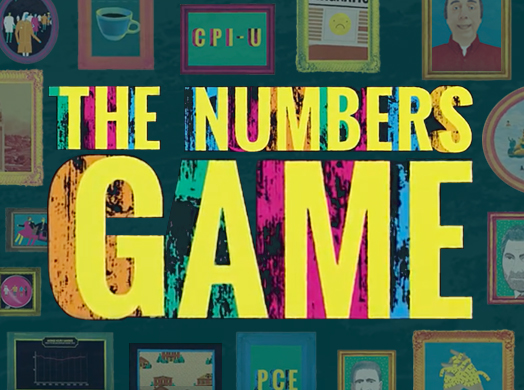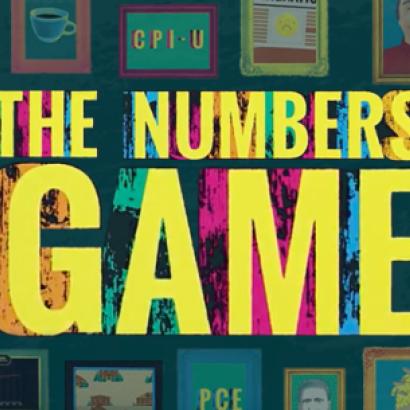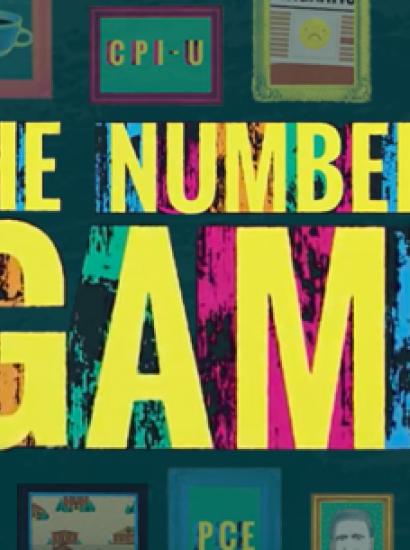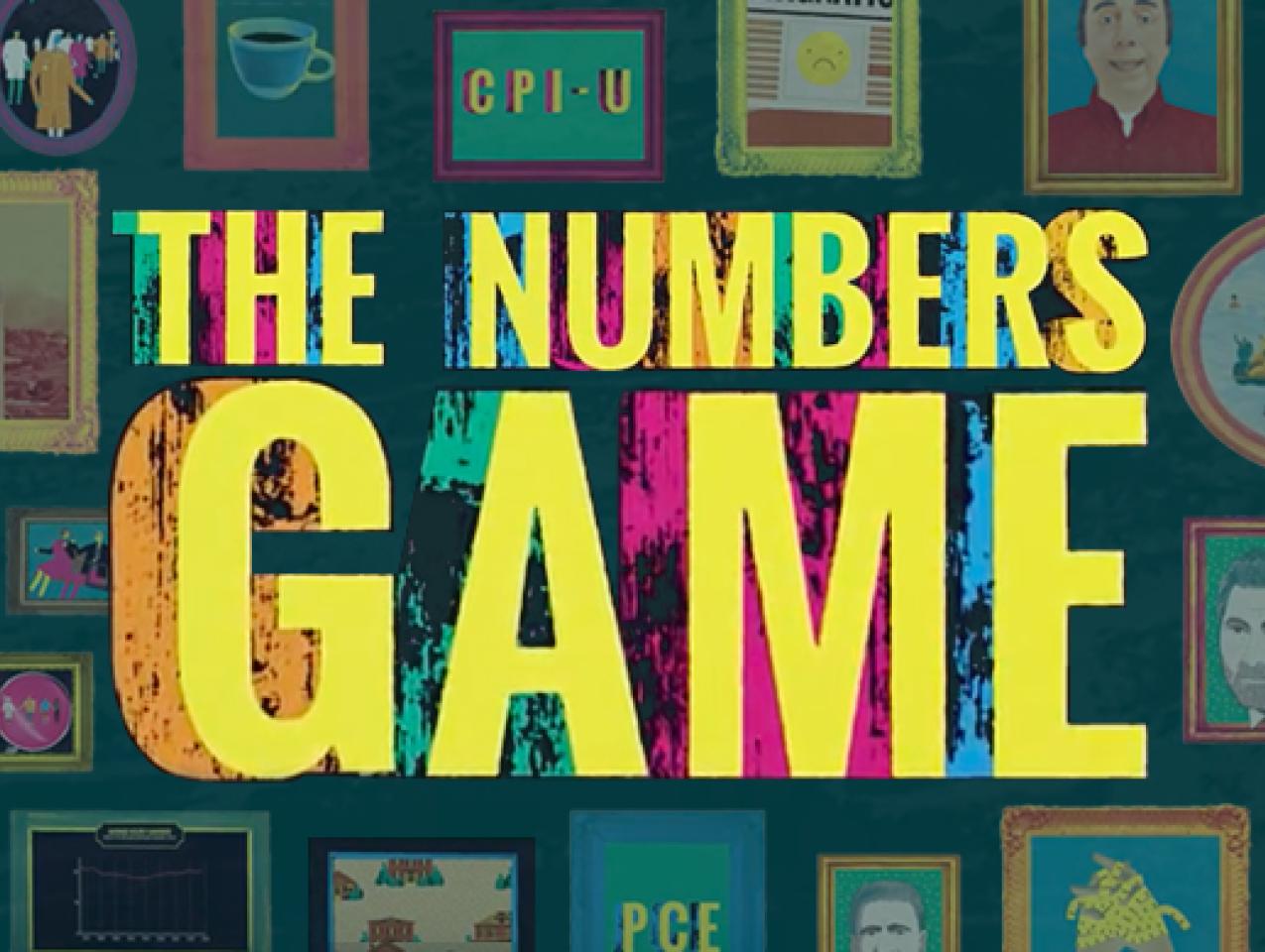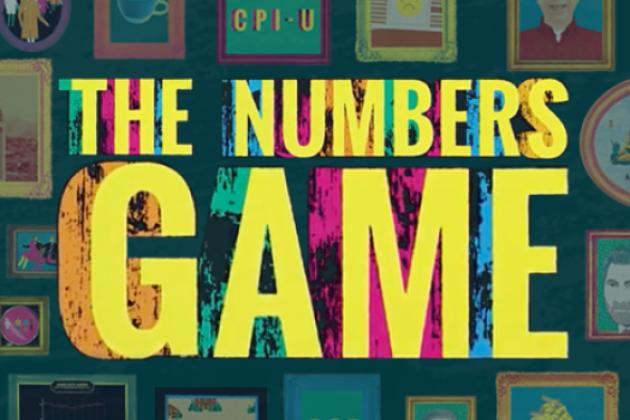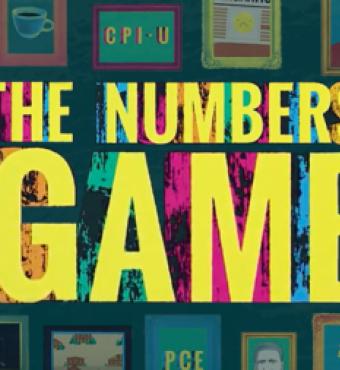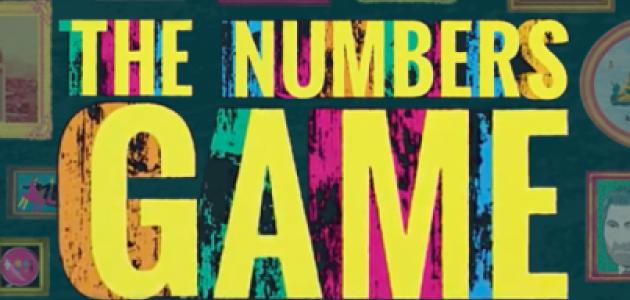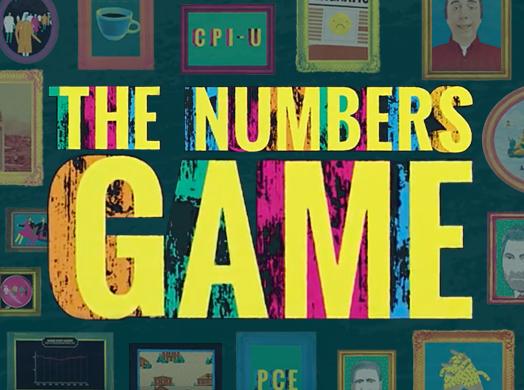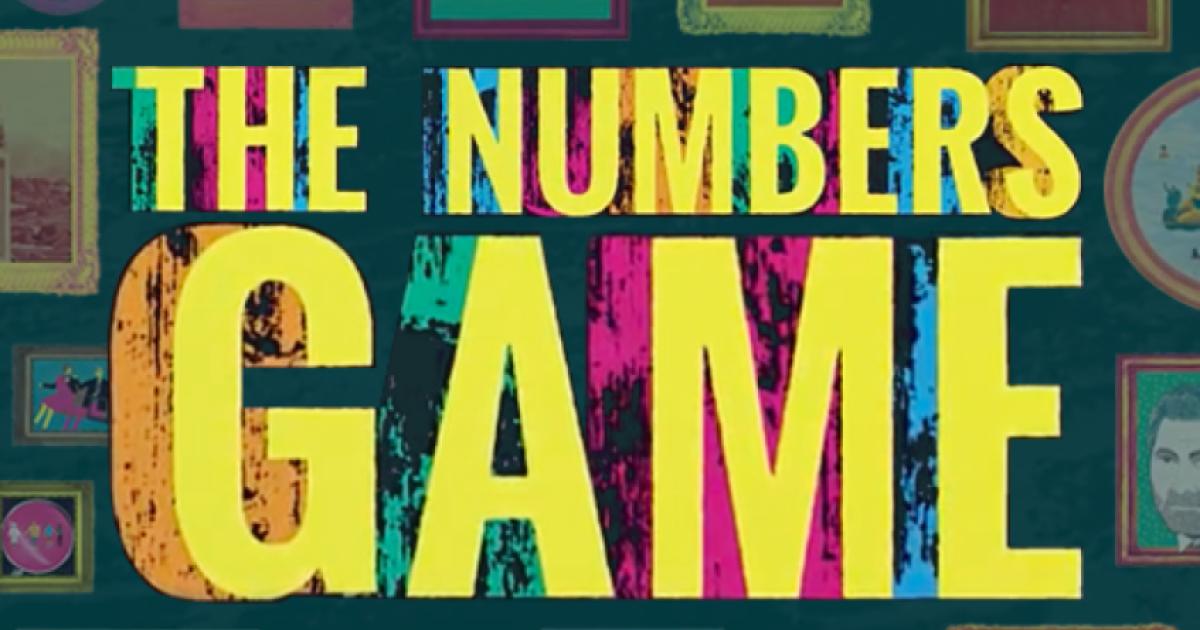by Jonathan Movroydis
In this interview, John and Jean De Nault Research Fellow Russ Roberts describes the origins of his PolicyEd animated series “The Numbers Game” and the ideas behind its episodes, which explain changes in the standard of living over the past fifty years in America, whether the rich get all the gains from economic growth, and the importance of distinguishing between inequality and poverty.
What did you hope to achieve with the “Numbers Game” series for PolicyEd?
My goal was to show a more thorough picture of how the American economy is treating individual lives than the one we usually hear in the marketplace of ideas. My response to the mainstream approaches to measuring economic progress is that it’s complicated. A lot of people have what I consider too narrow a view of the last fifty years in American economic history.
What are some of the biggest misunderstandings about how the economy affects individuals and families over the past fifty years?
A lot of people argue authoritatively that all the gains and growth in the economy over the last fifty years have gone to a tiny sliver of the population: the people at the top. I think this is a gross misreading of the evidence. It leaves out pieces of information that would lead to different conclusions. When you look at a fuller picture, you get a very different impression of how people, rich and poor, have fared over the last fifty years.
In the first episode, titled “How Is the Middle Class Doing?,” you talk about the state of the middle class since 1970. You challenge the idea that middle-class income and purchasing power have remained stagnant since then. Fast forward to 2021, how do you see the middle class faring in light of the COVID-19 pandemic, a $3 trillion budget deficit, countless losses of small businesses, and the significant shifts that are likely to result in the economy?
When the pandemic ends and we return to a world where people are comfortable traveling, going out in groups, gathering in bars and restaurants, concerts, movies, and musicals, and so on, the fundamental questions will be, will everything be like it was before? Is the new normal going to be very different from the old one? Many people have experienced terrible losses from the pandemic and from our various public health responses to it. Will restaurant life return to what it was? We don’t know. Will people continue to work from home via Zoom? We don’t know. Will people go back to traveling? We don’t know. Whatever happens, the question is how long will it take for new patterns of demand and supply to establish themselves, and what will be the costs and benefits for people providing and purchasing goods and services in that new world?
I don’t think the pandemic did anything structural to the economy. There were losses, but I expect us to bounce back from that. That doesn’t mean everyone’s going to be made whole. There will be restaurant owners who lost their dream, and workers who couldn’t pay rent because they lost their jobs. However, I am still guardedly optimistic that the economy will improve strongly once the fear and reality of the pandemic changes.
Is there a silver lining for the economy in this pandemic?
Certainly, there are many silver linings. For me, one of the most important ones is that in my neighborhood, people walk around outside, strolling with their children and dogs in ways they didn’t a year ago. It’s really beautiful. I feel like I’m living in the 1950s.
I think there have been some technological benefits as well. Zoom is extraordinary. I’m not suggesting it replaces face-to-face work, surely it doesn’t, but I’ve made a lot of connections with old friends and attended conferences which I couldn’t have if everything was just face-to-face. I’m very excited about the scientific gains in combating infectious diseases and vaccine exploration. The COVID-19 vaccines were designed in just two days back in January 2020. For almost a year, the vaccines had been tested for efficacy and safety, a process that I think should have been sped up dramatically. The scientific part of the process was lightning fast, though, and that is not only glorious and helping us emerge from this tragedy, but I believe it also provides benefits in the future, especially on the process of innovation in medicine. So, yes, there are consolations for sure.
Will you talk about the theme behind episode two, “The Paradox of Household Income”? In the video, you explained that the changing family structure, especially divorce and falling marriage rates, have distorted income data for the middle class and perhaps contributed to income loss. Would you also conclude that lower income has contributed to these demographic changes?
It is not so much that the demographic changes I talk about in that episode have led to lower income. What they’ve led to is lower measured income growth. The growth in divorce and the reduction in the marriage rate have made it more difficult to accurately assess whether people are getting ahead or not.
Applying averages can be very misleading when looking at income growth, because a small number of observations can distort the average dramatically and make that figure unrepresentative of the population as a whole.
The common belief is that using median income is a more representative measure. However, when there is significant demographic change, the median also distorts your ability to measure progress in the economy by individual groups.
The challenges of measuring economic progress are largest for the groups with the biggest changes in marriage behavior. The least educated are much less likely to get married or stay married. That means there are a lot more households with only one earner, which distorts measuring progress for the least educated.
A lot of people argue that unlike in the past, you have to have two individuals working today to be in the middle class. What is shocking is that the proportion of all households that have two income earners has not changed very much in the last fifty years. Everybody knows that more women are working than they did fifty years ago. But there are many fewer married couples. So actually there’s very little change in the proportion of households with two earners.
In episode three, titled “Do the Rich Get All the Gains?,” you dispel the notion that “the rich get richer and the poor get poorer.” You argue that the economy has not been rigged to favor the rich. You also explain that people, even the poorest, have been getting pay increases over the past five decades. On both the right and the left there are arguments that globalization, automation, and immigration have all destroyed or limited economic opportunities. How would you address those arguments?
Those three factors, globalization, automation, and immigration have all challenged the ability of people with the least skills in America to do well. Having said that, people with the least skills have still benefited from overall economic growth and seen their material well-being improve. If you followed poor individuals near the bottom of the income distribution, at the 25th percentile, since 1970, and you saw what happened to them over their life, they have, on average, significantly increased their income.
I think the standard claim that all the gains went to the rich is simply not true. There are people whose prospects are disappointing. There are people who don’t have an opportunity to participate in the economy. There are also many things in public policy that give advantages to the wealthiest Americans and handicap the poorest ones. At the top end, this has included the willingness of government to bail out investment banks in 2008. The losses in the market were absorbed by taxpayers and the gains were transferred to the individuals lucky enough to hold those assets.
Agricultural subsidies are another policy that provides advantages to the wealthiest Americans. Many people believe that agricultural subsidies help small farmers. They don’t. They benefit wealthy agribusiness. Tariffs and quotas are invoked in ways to protect American workers. Trade restrictions on sugar for example, result in higher prices for average Americans and only subsidize a handful of wealthy families in the Dakotas and Florida where sugar beets and sugarcane grow.
Historically, what policies have helped the economic mobility of the poor and middle class?
I would pick freedom. I used to teach courses for journalists involved in economics and public policy, and I would ask them at the beginning of the program, what’s the transformation of the standard of living in the average American over the twentieth century? The median answer in those surveys was that the average American was 50 percent better off at the end of the twentieth century compared to the beginning. It’s a hard to number to measure with any precision, but a 50 percent improvement is not a very good answer. Most economists would say the average American standard of living in 2000 was twenty to thirty times higher. Where did that come from? What policies were put in place? What happened over the twentieth century that revolutionized economic well-being?
In 1900, 40 percent of Americans lived on the farm, but by 2000 that proportion was about 3 percent. That’s a big change. Technological progress made food less expensive and enabled the creation of new types of industries. Those changes took place over the whole economy as innovation took place. Despite two world wars and a horrific economic depression in the 1930s, somehow, by the end of that, the economic well-being of Americans was transformed. What was the secret sauce? What was the policy lever? My belief is that our success was based on the fact that we left things alone as much as possible. We let people figure out for themselves what was best for them to do with their gifts. We gave people the opportunity to invest money in new enterprises that might be transformative and to lose every penny of it if it wasn’t successful. Capitalism, correctly defined, is a profit and loss system. It is not just about the profits, we need losses to make sure that lousy ideas and bad concepts don’t use up resources.
On the fourth episode, “Let’s Party Like It’s 1973,” you talked a little about changes in prices and living standards over the past fifty years. One of the points you make is that price indices are not always an accurate indicator of measuring standard of living. Why do you believe that price indices have been inaccurate?
Income is a lot higher than it was fifty years ago. But so are prices. What we usually are asking in public policy is the change in what can consumers purchase—does their higher income allow them to buy more of what they care about. That means you have to measure inflation—the change in prices over time.
The problem is that when correcting for inflation, we don’t always take account of improvement in the quality of the goods in the basket. A 1973 Honda Civic is like a metal box that has an engine and wheels. There aren’t features such as air bags, CD players, rear-view cameras, or GPS systems. It’s not an apples-to-apples comparison with a 2021 Civic. When a person says that “a Honda is twelve times more expensive today,” you can reply, “But you get a lot more Honda!” You want to control for the improvement in quality if you want to measure changes in the what people can afford with their income.
An unconvinced person might ask, “Well, what if Honda made a Civic like they did in 1973 at a fraction of today’s price?” The answer is, “Nobody wants that car. It wouldn’t sell.”
We imperfectly assess material standard-of-living changes over time because we don’t accurately measure the changes in price and control for quality accurately. We’re not really comparing apples to apples, so we underestimate the growth and standard-of-living changes from material sources.
In your most recent episode, you argue that both the Right and the Left miss the point in the economic inequality debate and that both sides should focus on expanding education for the disadvantaged. How should education be geared towards achieving individual prosperity at all levels of our society?
The point of the last episode was to argue that inequality and poverty are not the same thing. Poverty is in and of itself a bad thing. Inequality is not. Everybody’s getting better off, but some people are getting better off faster than others, so the result is rising inequality. It’s not a problem most of the time. But it is a problem if people can’t get ahead. That’s what we ought to be focusing on. Not so much whether some are getting ahead faster than others.
Education is one way we can help people get ahead, especially those at the bottom. It’s a tragedy that for most people a great education is dependent on the ability to afford a house near a great school. You are letting our school system build children’s intellectual well-being based on the location of their neighborhood. What that does, of course, is just push up the prices of houses in the most expensive neighborhoods and makes entry into those schools further out of reach for the poorest of students.
I would just like to see much less government involvement in education and, at a minimum, much more freedom to let people choose their own schools. Some ways to fix this include expanding voucher programs or dismantling the current system, which subsidizes schools regardless of quality. Our public school system has betrayed two and soon three generations of children. This is a tragic policy failure.







